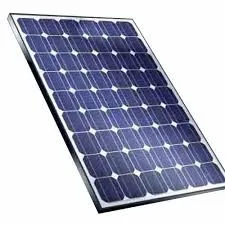Price Analysis for 220 Watt Solar Panels in Today's Market
Understanding the Pricing of 220 Watt Solar Panels
As the world increasingly shifts towards sustainable energy solutions, solar panels have emerged as a popular choice for both residential and commercial applications. Among the various options available, the 220-watt solar panel has become a notable contender, thanks to its efficiency and versatility. In this article, we will delve into the price of 220-watt solar panels, the factors influencing their cost, and the potential savings and benefits they can bring.
What is a 220 Watt Solar Panel?
A 220-watt solar panel is a photovoltaic module that has the capacity to convert sunlight into electrical energy at a maximum output of 220 watts under optimal conditions. This capacity makes it suitable for a variety of applications, from powering small appliances to contributing to larger solar energy systems. With advancements in solar technology, these panels are designed to maximize efficiency, ensuring more energy is generated from the same amount of sunlight.
Price Range of 220 Watt Solar Panels
The price of 220-watt solar panels can vary based on several factors, including brand, materials, technology, and the region where they are purchased. On average, you might find prices ranging from $150 to $300 per panel. However, it is essential to keep in mind that this figure does not include installation costs, which can significantly add to the overall expense.
When evaluating the price of solar panels, it’s also worth considering the long-term investment aspect. Although the initial cost may seem high, solar panels can lead to substantial savings on electricity bills over time. Many manufacturers offer warranties ranging from 25 years or more, assuring customers of the longevity of their investment.
Factors Influencing the Price
1. Material Quality Solar panels can be made from different materials, such as monocrystalline or polycrystalline silicon. Monocrystalline panels are generally more efficient and have a higher price point than polycrystalline panels.
2. Brand Reputation Well-established brands that have a proven track record of reliability in solar technology may charge more for their products compared to newer or less reputable brands.
3. Technological Advancements The integration of newer technologies, such as improved efficiency ratings or better thermal resistance, can affect the price. Panels with advanced features typically come at a premium.
220 watt solar panel price

4. Market Demand The price of solar panels can also fluctuate based on market demand and supply chain factors. For example, government incentives and subsidies can influence demand, which in turn affects pricing.
5. Installation Costs The cost of installation varies based on the complexity of the installation process, the labor fees in the region, and any additional equipment required, such as inverters or mounting hardware.
Benefits of 220 Watt Solar Panels
Investing in 220-watt solar panels offers multiple benefits beyond just reducing energy costs. Here are a few noteworthy advantages
1. Environmentally Friendly Solar energy is a clean and renewable resource, reducing the carbon footprint associated with traditional energy sources.
2. Energy Independence By generating your own electricity, you can reduce reliance on grid power, insulating yourself from price increases in the long run.
3. Increased Property Value Homes equipped with solar energy systems often see an increase in property value, making them more attractive to potential buyers.
4. Tax Incentives Many governments offer tax credits and other incentives for installing solar energy systems, assisting homeowners in offsetting their initial investment.
5. Low Maintenance Solar panels have few moving parts, and their maintenance is generally low, requiring periodic cleaning and inspections.
Conclusion
The investment in a 220-watt solar panel system can be a significant step towards energy sustainability and financial savings. While the price of these panels varies based on several factors, the long-term benefits often outweigh the initial costs. For homeowners and businesses alike, going solar represents a commitment not only to personal financial health but also to the environment. As technology continues to advance and costs decrease, the accessibility of solar energy solutions is likely to improve, making solar power an even more viable option for many.
-
String Solar Inverter: The High-Efficiency Solution for Smart Solar EnergyNewsJul.14,2025
-
Revolutionizing Rooftop Energy with the Power of the Micro Solar InverterNewsJul.14,2025
-
Power Independence with Smart Off Grid Solar Inverter SolutionsNewsJul.14,2025
-
On Grid Solar Inverter: Powering the Future with Smart Grid IntegrationNewsJul.14,2025
-
Monocrystalline Solar Panels: High-Efficiency Power for the Future of Clean EnergyNewsJul.14,2025
-
Bifacial Solar Panel: A Smarter Investment for Next-Generation Energy SystemsNewsJul.14,2025







